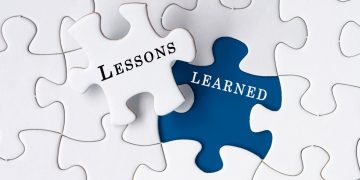Have you ever felt that you are making decisions quickly or slowly? Have you wondered what might be the reason for this? Daniel Kahneman in his book “Thinking fast and slow” describes the systems behind these actions.
What is WYSIATI?
WYSIATI, is an acronym for “What You See Is All There Is”, which is a concept that was described by psychologist Daniel Kahneman in his book “Thinking fast and slow”. It refers to a cognitive bias where people tend to make judgments and decisions based solely on the information readily available to them, while ignoring or underestimating the information that is not immediately present.
In this book, Daniel Kahneman describes a two-way system of thinking, system 1 (Thinking Fast) and system 2 (Thinking Slow).
- System 1: Is a near-instantaneous process. It happens automatically, intuitively, and with little effort. It’s driven by instinct and our experiences.
Example
Imagine a friend who has grown up in a place that has a problem with aggressive stray dogs. Also imagine that friend has been chased by these dogs and has several friends who have been bitten by such dogs.
Even when this person meets friendly dogs, it’s likely that his System 1 will immediately go into freeze.
What he’s seen is “dogs = terrifying” and it will be very difficult to convince him otherwise.
- System 2: This system is more deliberate and logical, a bit of a thinker. It is slower and requires conscious effort, it takes its time weighing options and considering outcomes.
Example
You see a problem 17×24. Upon first glance, it becomes evident that the given problem involves multiplication. It is possible to solve this problem using either paper and pencil or mental calculations, albeit at a relatively slower pace. This is a case of slow thinking, which is referred to as System 2.
Most of the time, System 1, which functions as a first filter, responds to anything without having to include System 2, the rational part. This is very useful to economize a good part of our activities, but it can be problematic when we make important decisions, because System 1 is often wrong.
For this reason, it’s wise to wait for things to settle down before making a snap judgement. We give System 2 more time to develop a better judgement and, more than likely, notify us that we want higher-quality information in order to make a better choice when we refrain from reacting to things right away.
Have you thought?
WYSIATI can be an important tool in the shipping industry, where thorough analysis and consideration of various variables are crucial for safe and efficient operations.
How does WYSIATI apply to business?
Recognizing the constraints of basing judgements on what is readily apparent or accessible requires an understanding of WYSIATI. It emphasizes the value of critical thinking and the need to consider a larger variety of data, circumstances, and viewpoints in order to make better informed and precise decisions. Acknowledging the existence of WYSIATI in our cognitive processes enables people to make more deliberate and sensible choices, especially when faced with challenging or significant circumstances, for example in the workplace.
Potential errors on System 1
#1 Law of small numbers: Most people have a poor understanding of statistics. Because of this, individuals can assume that the outcomes of a small sample, such as 100 survey respondents, are indicative of the whole population. This also explains why individuals draw judgements based on little information or contradicting facts.
#2 Assigning cause to random chance: Statistics provide a lot of data. Numerous facts about the world, including sampling errors, are the result of chance. Causal interpretations of random occurrences are always incorrect.
#3 Over-optimism: It is common for people to make predictions and plans that are “unrealistically close to best-case scenarios. People often make judgements based on delusional optimism rather than on a rational weighting of gains, losses, and probabilities when projecting the results of hazardous ventures.
Potential errors on System 2
Cognitive, emotional, and physical System 2 activities all use a common mental energy source to some extent. Research repeatedly demonstrates that while the brain is engaged in one kind of System 2 thinking, it gets in the way of any other sort of System 2 thinking that you may need to do concurrently. Furthermore, even if one System 2 action is physical and the other is cognitive or emotional, engaging in one kind of System 2 thinking reduces our capacity to engage in another System 2 activity in the instant aftermath.
However, no one is perfect. Both systems have their own unique way of working and both are prone to errors. But generally speaking, system 1 is more prone to errors. It is in fact susceptible to various cognitive biases like confirmation bias, availability bias, similarity bias, etc.


































































